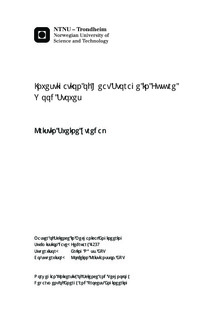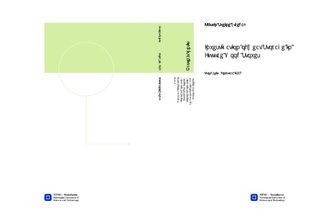| dc.description.abstract | The objective of this work was to investigate heat storage in a heat storage unit utilizing a phase change material (PCM). This included finding an optimal geometry for heat transfer from the heat storage unit to the surroundings, finding an effective thermal conductivity of the PCM, and combine these in an overall PCM heat storage model. The advantage of using a PCM is that the PCM can store large amounts of heat in liquid phase as latent heat. This will contribute to a stable heat release to the surroundings.
Methods for enhancing the heat transfer from a PCM heat storage unit to the surroundings were studied. The research considered both free convection and radiation heat transfer. Further objectives were to find a suitable geometry of fins for heat rejection to the surroundings. Heat transfer from two different fin arrangements to the surroundings were investigated, a fin array and fin channels. The dimensions of the geometries were optimized. Both geometries showed satisfying results, but it was concluded that fin channels were preferable to a fin array.
A heat storage unit was investigated experimentally. The experiments considered two different setups, supplying heat to the heat storage units top surface, and supplying heat to the bottom surface. The results were compared to results from numerical simulations. The heat storage unit heated from the top surface showed good agreement compared to results from numerical simulations. The heat storage unit heated from below proved that heat transfer by free convection in the liquid phase had a significant impact on the melting pace of the PCM. The comparison with results from numerical simulations did however not show an immediate agreement.
The effective thermal conductivity of the PCM was found based on the experiments and compared to literature values. An uncertainty analysis was performed on the obtained effective conductivity. The results showed that the method employed for studying the effective conductivity was inaccurate.
An overall heat storage model was developed to combine heat supply, heat storage and heat distribution. The simulations were performed using PCM as well as PCM with aluminium foam to enhance the heat distribution in the heat storage unit and the heat transfer rate to the surroundings. The heat supplied to the heat storage unit was based on calculations of batch combustion of wood. The results showed that none of the tests for the PCM heat storage unit, or the optimization of the PCM heat storage unit, reached the requirements of heat transfer to the surroundings set for the model. The length of the PCM heat storage unit was also proved to be excessive. | |

